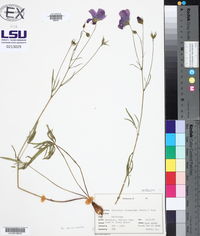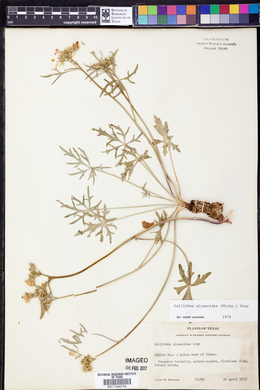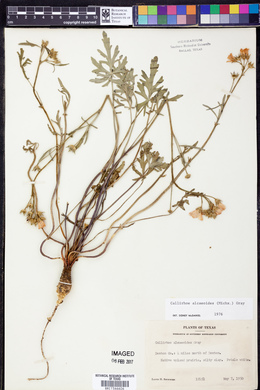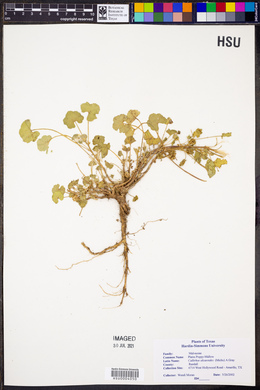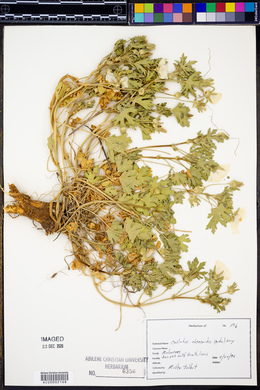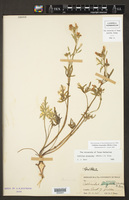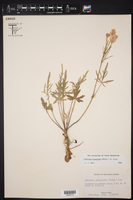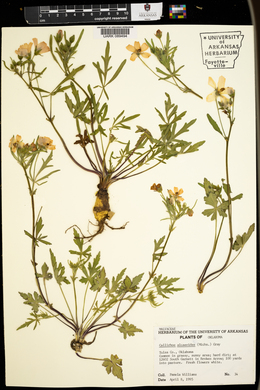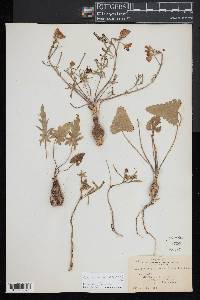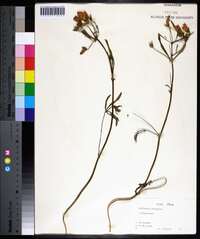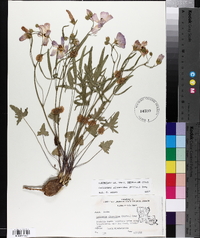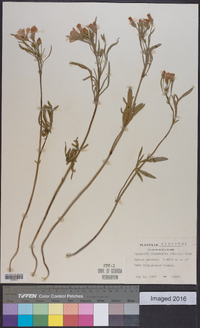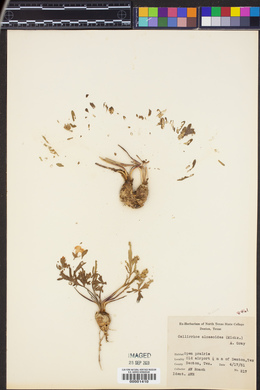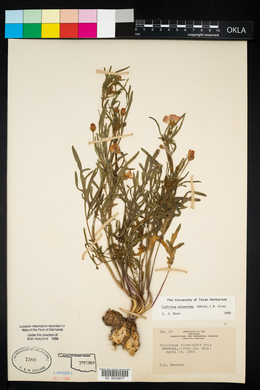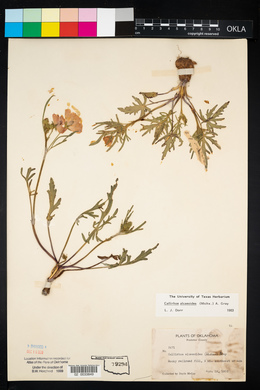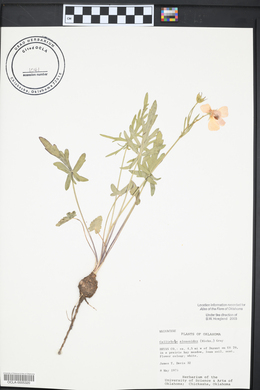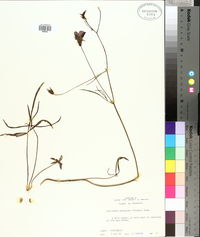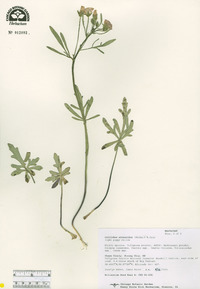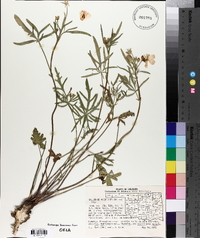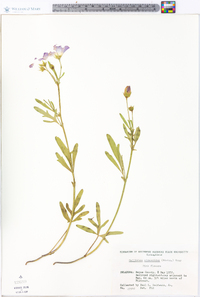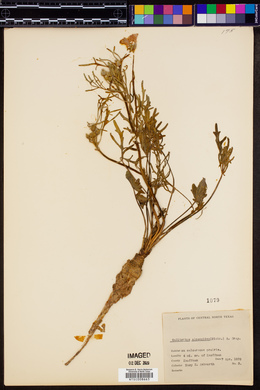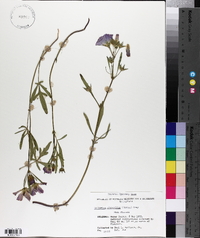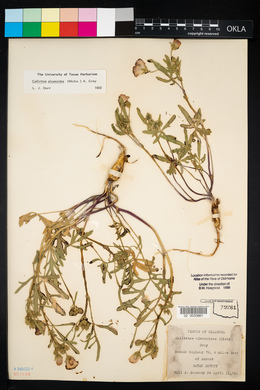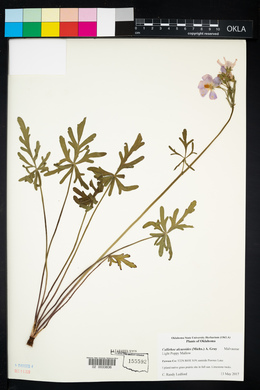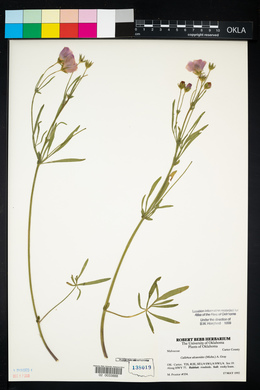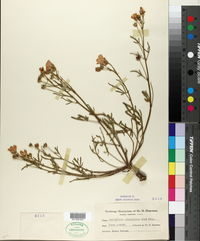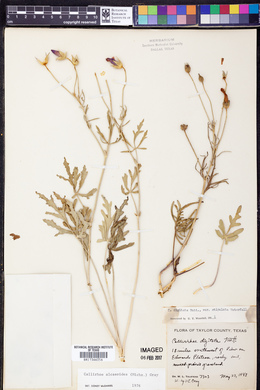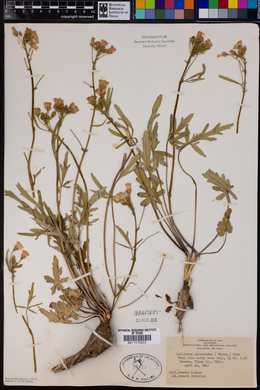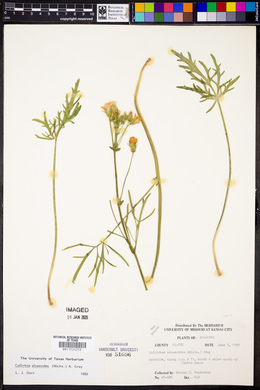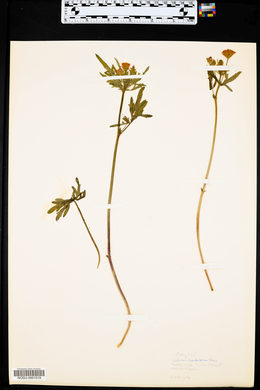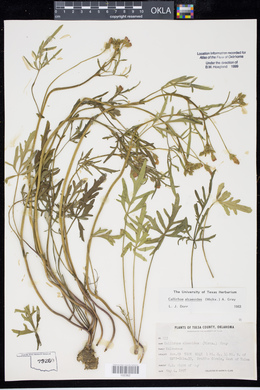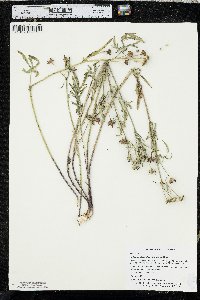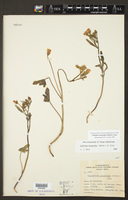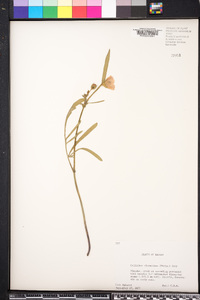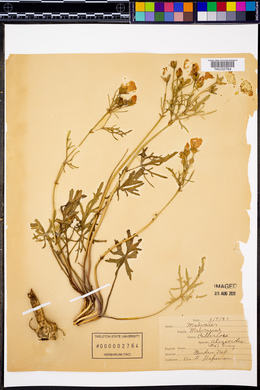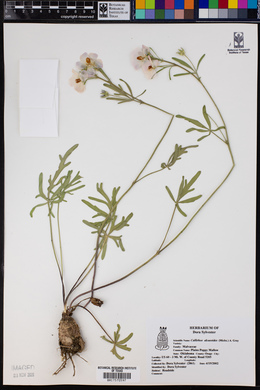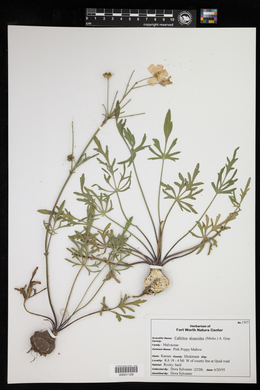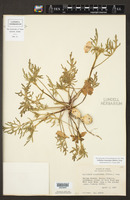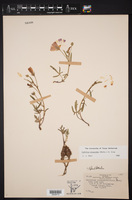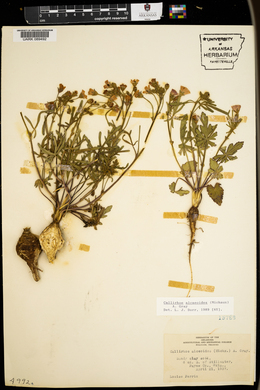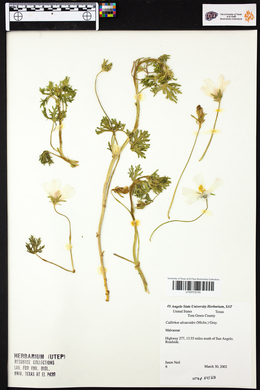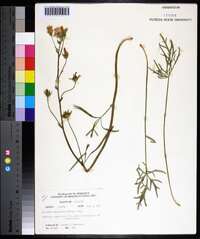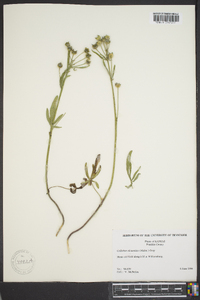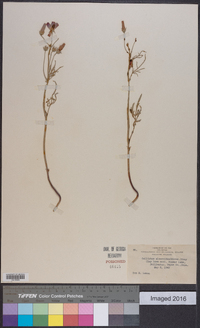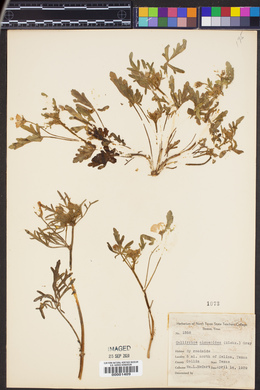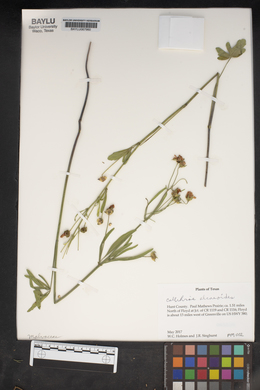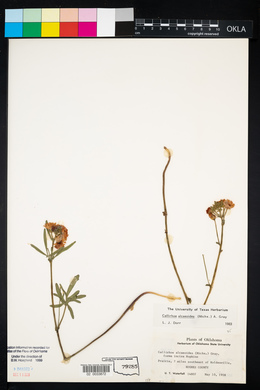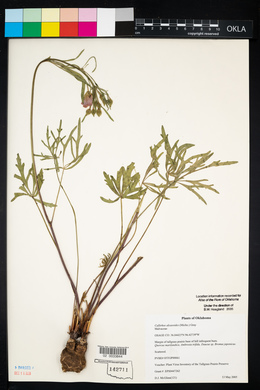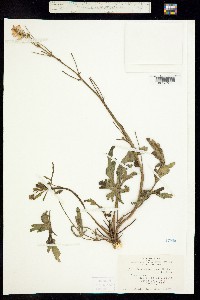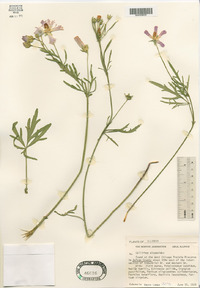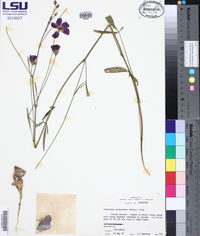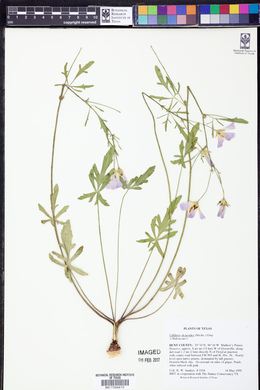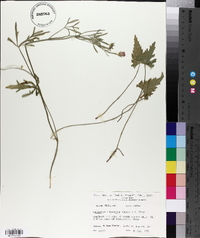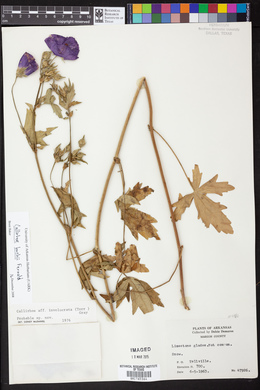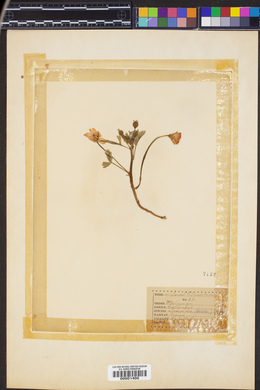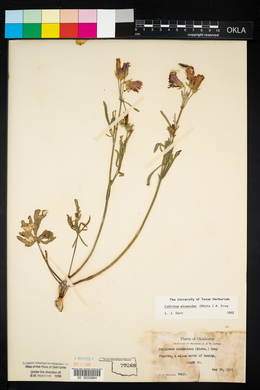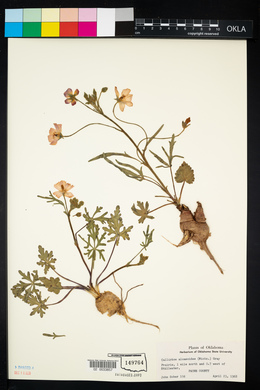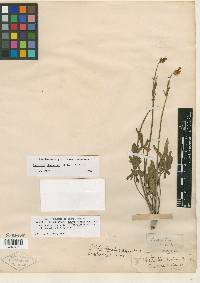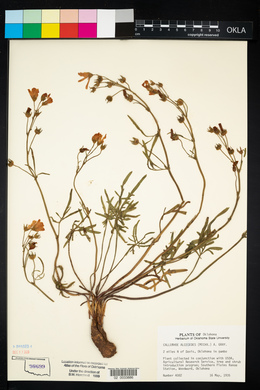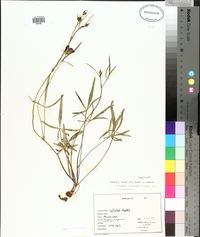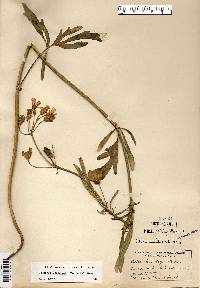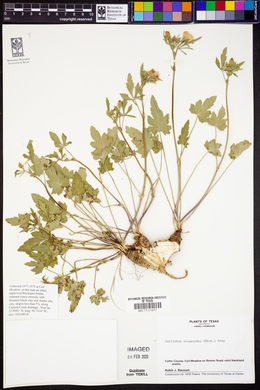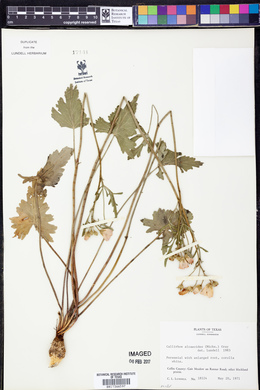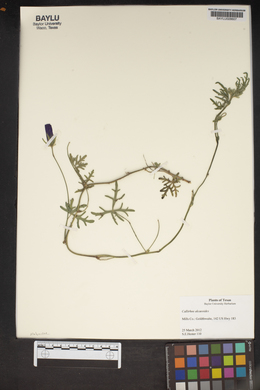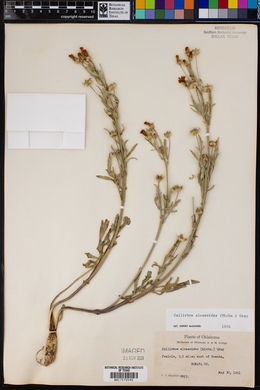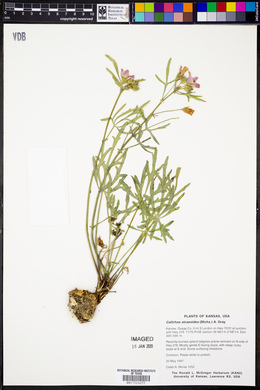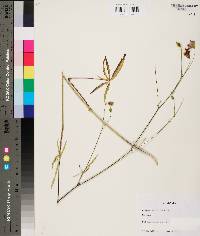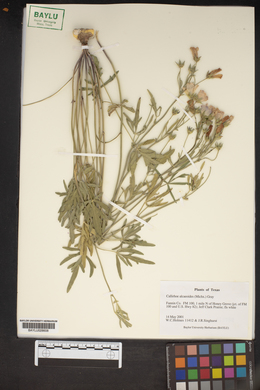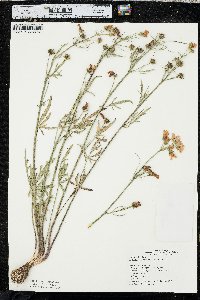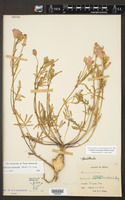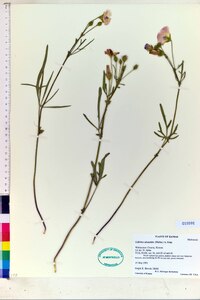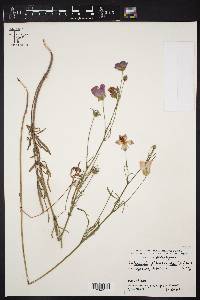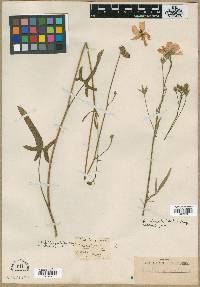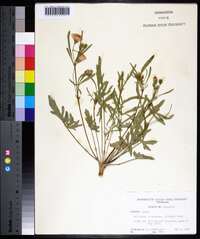
|
|
|
|
Family: Malvaceae
Light Poppy-Mallow, more...light poppymallow
[Malva pedata var. umbellata Torr. & A. Gray, moreSida alcaeoides Michx.] |
Perennial herb 15 - 60 cm tall Leaves: basal and alternate, stalked, branched-hairy below, and with persistent, relatively large (0.5 - 1 cm long), egg-shaped stipules. The leaf shape differs greatly between the larger, somewhat heart-shaped or triangular, shallowly blunt-toothed or sometimes lobed lower leaves; compared to the fewer, smaller upper leaves, which are deeply five- to eleven-lobed with slender segments that are further deeply lobed or coarsely toothed. Flowers: several, in axils of upper leaves or bracts, single on long slender stalks, white to pink or mauve, around 2 cm diameter, radially symmetric with five sepals alternating five spreading petals. The flowers on an individual plant are either all female (pistillate), or all flowers have both male and female reproductive parts (perfect), which means the species is gynodioecious. Sepals: five, but fused at very base, then separating into five, over 4 mm long, somewhat triangular, strongly three-nerved lobes with short, appressed, stiff hairs. Petals: five, spreading, white to mauve, elongate wedge-shaped with narrower base and abruptly flattened tip with shallow teeth or fringe. While the petals are always longer than the sepals, those of the perfect flowers (both male and female) are much longer (1.5 - 2.5 cm) than the female-only (pistillate) flowers (0.7 - 1.7 cm). Stamens: numerous, but filaments fused into a tube with anthers protruding above the middle. The anthers are only functional in the perfect flowers, while the pistillate flowers have fewer and sterile anthers. Pistil: enclosed by the stamen tube, with ten to twenty superior carpels (ovule-bearing structures), ten to twenty slender styles coming up through center of stamen tube, and ending with exserted, slender stigmas facing inward. Fruit: a ball-like structure of ten to twenty, one-seeded, hardened, veiny-wrinkled, appressed-hairy, crescent-shaped wedges (mericarps) subtended and enclosed by the persistent sepals. Stems: curved-ascending, slender, covered with appressed four-branched hairs, and arising from a robust, very hard, spindle-shaped, perennial root. Similar species: Callirhoe alcaeoides is similar to C. involucrata and C. triangulata, but both of those taxa have small bractlets alternating with and just below the sepals of each flower. In addition, the upper leaves of C. triangulata are not deeply lobed or segmented, and its fruit segments are non-wrinkled. Flowering: May to June Habitat and ecology: Very rare, found only in disturbed areas or where introduced. Occurence in the Chicago region: non-native Notes: Introduced from farther west, this species has only been found at two sites in the Chicago Region: along a train ballast in 1899. and more recently (in the past 25 years) at the West Chicago Prairie preserve in DuPage County, Illinois. The genus Callirhoe is considered the North American counterpart of the Old World genus Malva. Author: The Field Museum Stems curved-ascending, 1.5-6 dm, covered with 4-rayed appressed hairs, as also the petioles, peduncles, and lower lf-surfaces; basal and lower lvs cordate to triangular or ovate, crenate-lobulate or often some of or all them ±lobed or cleft, the other lvs few, smaller, and generally deeply cleft; stipules 5-10 mm, persistent; peduncles (pedicels) axillary to reduced upper lvs or bracts, 1-fld; gynodioecious, the functionally pistillate fls with smaller sep and pet and fewer, nonfunctional anthers; epicalyx wanting; cal hispid-strigose; sep-tips connivent in bud, forming a short beak; pet white to pink or mauve, erose or fimbriate across the top, mostly 15-25 mm (7-17 mm in pistillate fls); mature carpels indurate, reticulate-rugose, copiously strigose; 2n=28. Prairies and roadsides; Ill. to Tenn., w. to Nebr., Kans., and Tex., more common westward. May-July. Gleason, Henry A. & Cronquist, Arthur J. 1991. Manual of vascular plants of northeastern United States and adjacent Canada. lxxv + 910 pp. ©The New York Botanical Garden. All rights reserved. Used by permission. |

